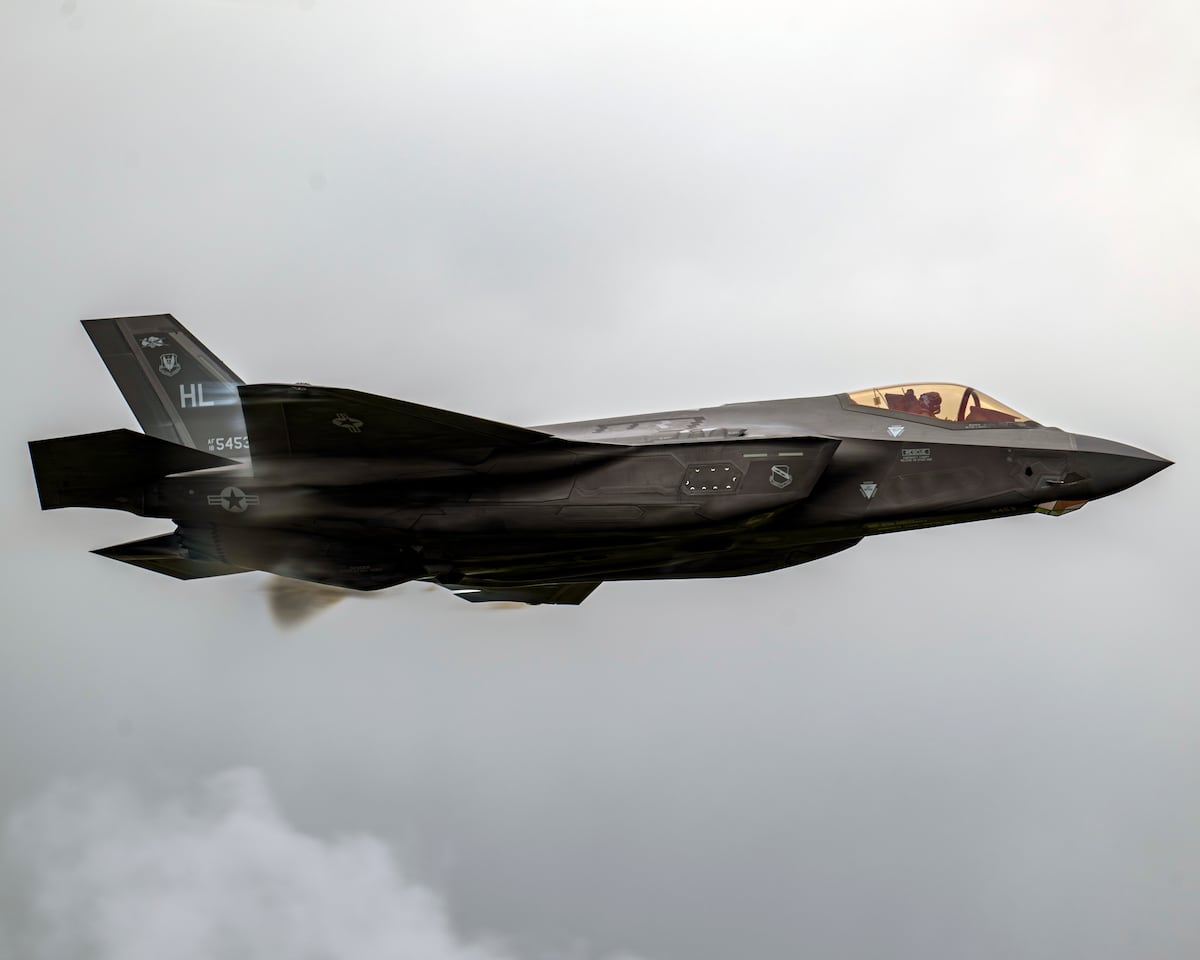The Air Force would cut its F-35A purchase for fiscal 2026 roughly in half under the White House’s draft defense budget.
The service typically buys about four dozen Joint Strike Fighters each year, with some years’ purchases topping 60. But a budget document obtained by Defense News shows the service would procure 24 F-35s next year, for a cost of nearly $4 billion.
That is less than the 44 F-35s, costing $4.8 billion, the Air Force is on track to buy this year, and the 51 jets worth $5.5 billion the service bought in 2024.
And while the number of jets the Air Force plans to buy would drop by 45% between 2025 and 2026, the savings would lag far behind. The cost of the F-35 purchases in 2026 would drop less than 18% over the 2025 cost, suggesting economies of scale would suffer from the reduced buy.
The slow emergence of budget documents and administration spending plans in this way is highly unusual, even for an administration in its first months. Proposed budgets for the upcoming fiscal year are often released formally sometime in the spring and accompanied by briefings explaining the spending plans.
But President Donald Trump’s administration has not rolled out its full budget proposal for fiscal 2026, though it has trickled out broad outlines of spending plans.
The House Appropriations subcommittee on defense advanced Tuesday its own version of a Defense Department spending bill that looks closer to a typical F-35 purchasing plan.
That bill would provide $4.5 billion for the Air Force to buy 42 F-35As, as well as another $1.9 billion for the Marine Corps to buy 13 short takeoff and vertical landing F-35Bs. Another $2 billion was included for the Navy and Marine Corps to buy the F-35C carrier variant.
While the Air Force has sought to pare back some F-35 purchases in recent years, primarily due to dissatisfaction with delayed upgrades known as Technology Refresh 3, the apparent plan to slash purchases to this degree would be a surprise.
Top Air Force leaders have stressed consistently that the F-35 is the centerpiece of its fighter fleet. Some have referred to it as a “quarterback” that uses advanced data sharing capabilities to tie together multiple assets.
The Air Force’s fighter fleet is rapidly aging, and older F-15s and F-16s are retiring. Air Force leaders have often said the service needs to buy at least 72 fighters each year to modernize its aircraft and bring down the average age of its fleet.
RELATED
Buying 24 F-35As, along with 21 F-15EX fighters also budgeted in the Pentagon’s plan, would leave the Air Force far short of that goal in 2026.
The Air Force’s future budget plans, which it released last year, included proposals to buy 42 F-35As in 2026, 47 apiece in 2027 and 2028, and 48 in 2029. The service eventually wants to buy a total of 1,763 F-35As.
Doug Birkey, executive director for the Mitchell Institute for Aerospace Studies, said in an interview that cutting F-35 purchases this severely would be disastrous to the Air Force and irrevocably set it further back in its effort to modernize its fighter fleet.
“There’s no way the Air Force or the nation can afford to bring down the fighter buy rate,” Birkey told Defense News. “The legacy [fighter] assets are rapidly failing due to age, and we need 72 fighters per year just to tread water … We will never regain the time.”
A reduction in F-35 purchases would also throw the supplier base for the jet into disarray, Birkey said, not just Lockheed Martin, but also the more than 1,900 other companies that feed its supply chain.
Without consistent targets to work toward every year, the supplier base will get “whiplashed around,” he said.
“Everyone says we need to rebuild the defense industrial base, but this is not how you do it,” Birkey said. “The workforce, access to long-lead supply — everything that’s required for maintaining the ability to produce [F-35s] and surge [when more production is necessary], you destroy it through cuts like this.”
Birkey said the Pentagon is likely considering such drastic cuts due to rising expenses that are squeezing its budget, but he expects Congress will ultimately bring the F-35 buy rate back up to normal.
Trump has spoken highly of the F-35 and its stealth capabilities in the past.
Former Trump adviser Elon Musk has been a prominent skeptic of crewed fighters such as the F-35, calling them “obsolete in the age of drones.” Musk has dramatically and publicly fallen out of favor with the administration in recent weeks amid his criticism of the president’s signature spending bill.
Lockheed Martin’s stock dropped more than 6% after news broke Wednesday of the possible purchase cut, although the company has since pared back some of that loss.
The Air Force did not respond to a request for comment.
Stephen Losey is the air warfare reporter for Defense News. He previously covered leadership and personnel issues at Air Force Times, and the Pentagon, special operations and air warfare at Military.com. He has traveled to the Middle East to cover U.S. Air Force operations.
Read the full article here





